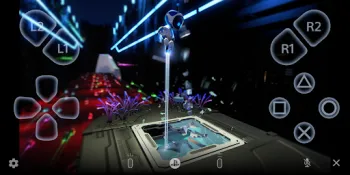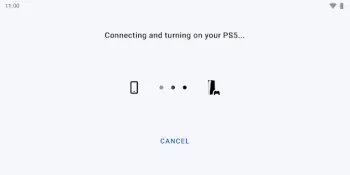Apps Home

The Evolution of Remote Gaming Technology
The evolution of remote gaming technology has been a fascinating journey, marked by significant advancements that have transformed the way we interact with video games. In the early years of console gaming, the concept of playing games without physically interacting with a console was little more than science fiction. Gaming was confined to living rooms, and players could only immerse themselves in their favorite titles when they were at home. However, with the advent of the internet, and later, faster broadband, the horizon of possibilities began to expand. Remote gaming technology began its evolutionary trajectory with the introduction of online multiplayer games, which necessitated advancements in network infrastructure and protocols. These early advancements laid the groundwork for more immersive remote gaming experiences. As internet speeds increased and latency decreased, the foundation was set for technologies such as cloud gaming and PlayStation's Remote Play feature, which allowed gamers to enjoy their consoles from virtually anywhere. Remote Play takes advantage of high-speed internet connections to stream video and audio from the user's PS4 or PS5 directly to another device, such as a smartphone or tablet. Over time, improvements in video compression algorithms and increased processing power of mobile devices have drastically enhanced the quality of these streams, reducing latency and allowing for high-definition gaming experiences on the go. For example, with a strong internet connection, players can use Download for Android and Download for iPhone devices to replicate console-quality experiences remotely, showcasing the significant progress from the era of pixelated graphics and packet losses. Moreover, the integration of advanced wireless controllers such as the DUALSHOCK®4 and DualSense™ offers users refined control and responsiveness reminiscent of playing directly on the console. These technological strides have not only expanded the realm of possibilities for gamers in terms of accessibility but have also opened up new avenues for developers and publishers to reach wider audiences and at different points during their day-to-day lives without the limitation of being tethered to a single location.
Technical Requirements and Device Compatibility
Understanding the technical requirements and device compatibility considerations are vital for an optimal remote gaming experience. At its core, remote gaming through platforms like PlayStation's Remote Play relies heavily on the infrastructure and capabilities of the user's hardware and network environment. To facilitate this, a stable and fast internet connection is indispensable, as remote gaming involves streaming real-time video and audio data from a console situated at one location to a mobile device elsewhere. A typical recommendation is an upload and download speed of at least 15 Mbps for smooth gameplay. However, users with higher speeds will typically experience a noticeable improvement in the quality and responsiveness of the stream. It's also crucial for the playing device to be capable of handling the stream without excessive latency or buffering, as this can severely impact the gaming experience. For mobile devices, this means having an operating system of Android 9 or later, which provides the necessary system resources to engage with the advanced features of Remote Play. Additionally, using contemporary wireless controllers such as the DUALSHOCK®4 for Android 10 or later, or DualSense for Android 12 and up, enhances the interaction by offering a more complete gaming interface, closely emulating the console's native environment. Compatibility details are even more nuanced with respect to certain mobile device brands and models that have been officially verified to support optimal performance. Devices such as the Google Pixel 7, 8, and 9 series represent examples of guaranteed compatibility, ensuring users can tap into the full potential of Remote Play functionalities. Additionally, certain conditions related to mobile data networks, particularly pertaining to network provider policies and data usage limits, are critical to note. Remote gaming consumes a significant amount of data, often more than traditional video streaming, which can lead to substantial charges if not adequately monitored. Lastly, it is crucial that the PlayStation console, whether it be a PS4 or PS5, is updated with the latest system software version to ensure all features and functionalities operate correctly. By acknowledging and addressing these technical constraints and compatibility requirements, players can better prepare for a seamless remote gaming experience that maximizes the potential of their devices and infrastructure.
User Experience and Practical Insights
Delving into the user experience of remote gaming, particularly through PS Remote Play, reveals a landscape rich with opportunities for convenience, immersion, and at times, technical challenges. At its core, the value proposition of remote gaming lies in its promise of mobility and flexibility, catering to users who seek to transcend traditional gaming limitations. The practicalities of setting up and using remote gaming involve several streamlined processes that enhance this experience. Initially, users must establish connectivity between their PlayStation console and the PS Remote Play app, which requires both devices to be on the same network during the initial setup. Once linked, Remote Play provides users with the ability to access their game library from virtually anywhere, assuming there’s a reliable internet connection. The experience is supported by intuitive interfaces that make navigation and gameplay feel natural despite the shift from a traditional console setup. An example of enhanced user interaction is the on-screen controller, which is inherently less tactile than physical controllers; however, it serves as a convenient stopgap for users who are unable to connect a dedicated controller to their device. Moreover, users can switch seamlessly between voice chats via their mobile's mic and use the on-screen keyboard for text inputs, capturing the depth of social gaming that Remote Play offers. Despite these advantages, users may encounter common obstacles such as variable latency or input lag, which can affect reaction times and responsiveness during more demanding gaming sessions. These issues often stem from network inconsistencies or device performance limitations. It's also notable that while the idea of using a mobile device as a gaming hub is enthralling, not all games lend themselves well to this format due to potential compatibility issues or the downsizing of gameplay interfaces onto small screens, which can detract from the experience. Nevertheless, for casual gaming sessions or for accessing games while away from home, Remote Play provides a bridge that enhances the user's ability to engage with their console without the need for physical proximity. Given these insights, users are encouraged to experiment and personalize their setups to alleviate any pain points, such as investing in mobile-specific controllers or ensuring optimal network conditions to create a custom remote gaming environment that reflects their personal gaming preferences.
Potential Challenges and Considerations
Engaging in remote gaming undoubtedly presents an array of challenges and considerations that users must carefully navigate to realize its full potential. With PS Remote Play being a relatively new innovation within the digital gaming space, users encounter several hurdles that can impede their overall experience. Foremost among these challenges is the issue of network dependability. Remote gaming can perform perfectly with high-speed internet but becomes increasingly unplayable as latency issues arise or bandwidth drops. Players must ensure their network's stability, often necessitating the use of wired connections for the console and the avoidance of concurrent high-bandwidth activities on the same network. Additionally, network-related latency can become more pronounced on wireless connections or when using lower-tier ISPs, which may lead to compromised streaming quality or disconnections. The impact of these technical limitations can vary depending on the game in question as action-packed, fast-paced games tend to suffer more than slower, tactically oriented ones. Another significant consideration is the compatibility of hardware, both in terms of the console's connection to the remote device and the ability of mobile devices to handle various controller inputs. While the compatibility of devices is increasing, as detailed on the compatibility list that includes high-end smartphones like the Google Pixel series, older or less powerful devices may struggle. This limitation calls for users to critically evaluate their device capabilities against the requirements outlined by the Playstation's Remote Play documentation. Furthermore, the inherently mobile nature of remote gaming introduces an additional consideration regarding data usage. Streaming games via mobile networks can quickly consume data, leading to potential charges or throttling by service providers, thereby affecting the continuity and enjoyment of the gaming experience. Lastly, the legal and administrative considerations, such as adherence to PlayStation's end-user license agreements and understanding policy changes or updates that could impact Remote Play's functional status, should not be overlooked. Each constraint reinforces the importance of approaching remote gaming with a comprehensive understanding of one's technological environment and personal needs, facilitating as seamless an operation as possible amidst these potential challenges.
Future Prospects and Developments in Remote Gaming
The future prospects and developments in remote gaming paint a portrait of exciting possibilities, driven by both technological innovation and evolving user demands. As we look to the future, the trajectory of remote gaming is set to align closely with broader digital trends such as advancements in 5G wireless technology, cloud computing, and augmented reality. The rollout of 5G networks promises unprecedented internet speeds and greatly reduced latency, which will directly complement Remote Play's requirement for stable, fast connections. This advancement in mobile broadband technology is anticipated to empower remote gaming to deliver consistent console-quality streams with minimal delay, thereby expanding its accessibility and appeal to a larger audience. Additionally, the integration of cloud technology will play a pivotal role in enhancing the remote gaming experience. By offloading the processing workloads traditionally handled by local devices to powerful cloud servers, companies can significantly reduce the hardware demands on users' devices, making it possible for older or less capable hardware to participate fully in the gaming experience. This may well incentivize developers to create hybrid game designs that leverage both local device and cloud processing capabilities, offering richer and more expansive virtual worlds. Moreover, we can anticipate a wave of innovation in peripherals designed to maximize the remote gaming experience, with companies investing in ergonomic and responsive mobile controllers, virtual reality headsets, and immersive audio solutions tailored for on-the-go gaming. With continuous developments in machine learning and AI, there’s potential for smarter, more adaptive gaming systems that can tailor experiences to individual user preferences, further personalizing the gaming landscape. As for the PlayStation's future, evolving Remote Play could integrate more deeply with Sony's broader ecosystem, facilitating cross-platform interactions and possibly incorporating elements of AR for more interactive augmented gaming experiences. The continual refinement of game streaming APIs and protocols will likely drive significant improvements in compression techniques, minimizing data consumption while optimizing video quality. These developments, combined with a growing global emphasis on connectivity, foreshadow a vibrant future for remote gaming—one where gaming is not merely an activity confined to certain spaces but a ubiquitous, seamless extension of our digital lives, transcending physical locations and leveraging the full potential of an interconnected world. For eager gamers and tech enthusiasts alike, this is an era to watch, one that promises to blur the lines between places we go and the games we play. As these advancements unfold, players can stay at the forefront by utilizing resources such as Download for Windows and Download for Mac, ensuring their systems are compatible and ready for the next evolution in remote gaming experiences.
Share Your Opinion
Your Email Will Not Be Published.
All Rights Reserved © Apps Home 2025


























D. Ruiz
I love this app! Since I've taken up school, i haven't had time to play often, so I've been playing on my breaks at work using my T-MOBILE 5g unlim...
M Roybal
Great app, easy to use. Being able to change resolution and frame rate settings is nice. If your internet connection is strong you probably won't h...
Riley Schultz
If you have a good internet connection then it is good for when you need to be in a different room, but don't want to haul your PS4 elsewhere. Long...
CM Joker
Works well when it does, but has some issues randomly. Overall great for setting up games to play while you're doing something else or quickly chec...
A Google user
It does what it's supposed to do. Although you need to give players a way to rearange the buttons instead of locking the buttons in place, some peo...